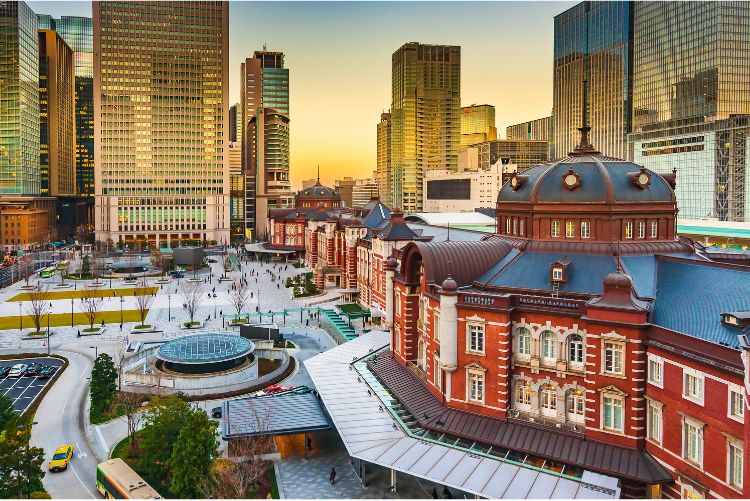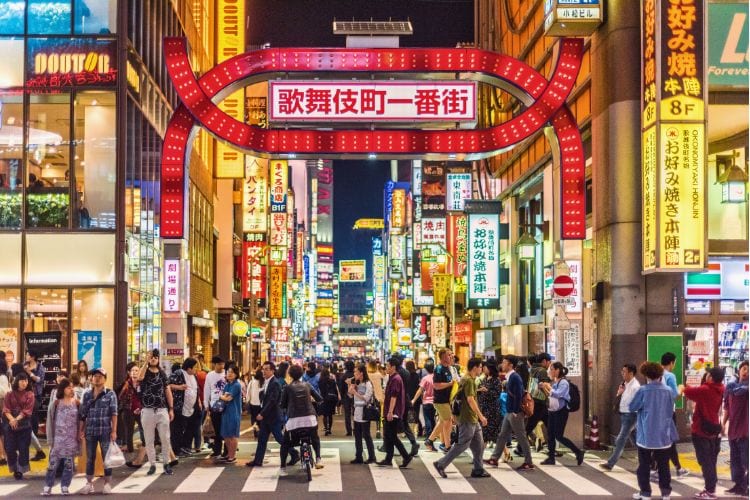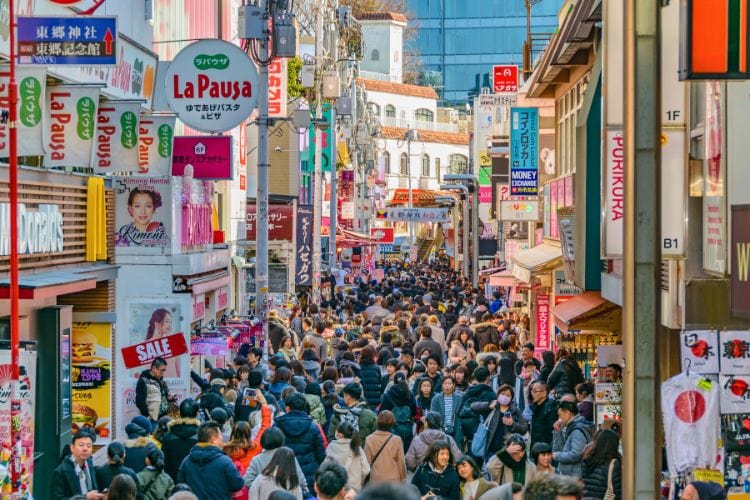
Tokyo is a must-visit destination for international travelers exploring Japan. However, as one of the world’s largest cities, Tokyo is too vast to explore casually. An efficient itinerary, informed by local knowledge, is essential for maximizing your experience.
As a travel writer and editor based in Japan, I can offer insights into the city’s must-see spots, drawing on my extensive experience guiding international friends around Tokyo. Their reactions and evaluations have helped me identify the most worthwhile places to visit.
Here are the must-do experiences in Tokyo, organized by region, to help you make the most of your trip.
Central East Area of Tokyo
Upon arrival at either Narita International Airport (NRT) or Haneda Airport (HND), you’ll need to transfer to central Tokyo by rail. Both airports offer routes to Tokyo Station, the gateway to the capital. Starting your Tokyo adventure in the district around Tokyo Station is a practical choice.
1. Selfie with Tokyo Station Building

Your first photo opportunity is the Tokyo Station building itself. After arriving in the city, head through the Marunouchi Exit to find the iconic red brick building in the station square.
Designed by the renowned architect Tatsuno Kingo in 1914, this Renaissance-style building was partially destroyed in 1945 and reconstructed in 1947.
After admiring the beautiful facade, turn around to see a wide, long path leading to a “forest” nestled among modern skyscrapers. This green space is the Imperial Palace of Japan. If you have time, store your luggage in a station locker and take a walk around the palace grounds.
Access:
Exit through the Marunouchi Gate at JR Tokyo Station.
2. Savor Dishes at Tsukiji Fish Market

Just a 10-minute taxi ride from Tokyo Station, Tsukiji Fish Market is Japan’s largest and a perfect spot for lunch or dinner.
While the central market functions have moved to nearby Toyosu, the vibrant street market at Tsukiji remains. Here, you’ll find countless seafood restaurants and shops offering an authentic taste of Tokyo.
Access:
Take a taxi or the subway to Tsukiji Station on the Hibiya Subway Line.
Read More: 10 Reasons to Visit the Historic Kansai Region of Japan
3. Stroll in Akihabara

Akihabara, the world-famous geek town, is a must-visit destination.
I once met an American traveler on a flight to Tokyo who planned to spend his entire trip in Akihabara, dedicated to buying anime merchandise. While it’s a sacred place for enthusiasts like him, even casual visitors can enjoy the town’s chaotic charm.
The streets are lined with stores selling electronic appliances and pop culture goods. The colorful townscape, adorned with neon signs, is a feast for the eyes. You might even spot maid-costumed girls offering photo opportunities.
Access:
JR Akihabara Station on the JR Yamanote Line is the closest station.
4. Watch Wrestling Matches at Ryogoku Kokugikan National Sumo Arena

A two-stop train ride from Akihabara brings you to Ryogoku, home to the National Sumo Arena.
Sumo is Japan’s national sport, and Ryogoku Kokugikan is a hallowed ground for fans. Even if you don’t attend a match, wandering around the area might give you a chance to see sumo wrestlers up close, catching a whiff of their signature vanilla-scented hair oil.
Access:
JR Ryogoku Station on the JR Sobu Line is the nearest station.
5. Selfie with Kaminarimon Gate

From Ryogoku, head upstream along the Sumida River to reach Asakusa, home to the famous Sensoji Temple and its iconic Kaminarimon Gate.
Within walking distance of Sensoji, the Kappabashi shopping district is a favorite among international travelers seeking Japanese-made kitchenware, knives, chopsticks, and dishes.
As you explore, you’ll also catch sight of the towering Tokyo Sky Tree, a highlight of any stroll through the area.
Access:
Take the subway to Asakusa Station on the Ginza Subway Line, Toei Asakusa Line, or Tobu Isesaki Line.
Central West Area of Tokyo
The JR Yamanote Line loops around central Tokyo, with the eastern areas mentioned above on one side. The western side of the loop also offers plenty of attractions.
6. Stroll in Kabukicho

Kabukicho in Shinjuku is one of Asia’s largest entertainment districts. JR Shinjuku Station, the world’s busiest train station, is just a short walk away.
The area is packed with multi-tenant buildings housing izakayas (Japanese-style pubs), karaoke bars, movie theaters, and adult entertainment shops.
While Japan is generally safe, Kabukicho warrants a bit more caution, especially at night.
Access:
JR Shinjuku Station or Seibu Shinjuku Station is within walking distance.
Read More: Fall in Love With Japan’s Nostalgic Vibes and Modern-Day Culture
7. Shopping in Harajuku

A two-stop train ride from Shinjuku brings you to Harajuku, a hub of fashion and youth culture. Just outside the station, Takeshita Street is lined with clothing stores, jewelry shops, cafes, and food stands. Expect to be surrounded by a bustling crowd as soon as you enter.
Continue through Takeshita Street to reach Omotesando, where high-end brands like CHANEL, Dior, and Louis Vuitton have flagship stores. Omotesando Hills is the street’s iconic shopping center, known for its striking architecture.
Access:
JR Harajuku Station is the closest station.
8. Walk Through Shibuya Scramble Crossing

Shibuya Scramble Crossing is one of the most famous intersections in the world, rivaling Times Square in New York.
Located just outside Shibuya Station, the crossing becomes a sea of people during major events like Halloween, the Soccer World Cup, and the World Baseball Classic, with crowds gathering to celebrate.
Access:
JR Shibuya Station is the nearest station.
Central Area of Tokyo
Within the loop of the JR Yamanote Line, you’ll find more must-see spots for international travelers.
9. Climb Tokyo Tower

Tokyo Tower is an iconic landmark that offers the option to climb to its observation deck via stairs.
Although Tokyo Sky Tree is taller at 634 meters, Tokyo Tower, built in 1958, has a unique charm and historical significance.
Nearby, the Roppongi and Azabu districts are home to Michelin-starred restaurants where you can enjoy gourmet cuisine alongside stunning night views.
Access:
Akabanebashi Station on the Oedo Subway Line and Kamiyacho Station on the Hibiya Subway Line are the closest stations.
Suburbs of Tokyo
Central Tokyo lies to the east of the city’s administrative boundary, with the JR Yamanote Line circling the area. As you move westward, the areas become increasingly residential and eventually mountainous.
10. Hike at Mt. Takao

In Tokyo’s mountainous region, Mt. Takao is a popular destination for hikers. With around three million visitors annually, it’s one of the world’s most climbed mountains.
The mountain offers several routes to the summit, with the beginner trail taking about an hour to reach the 599-meter peak. If you’re spending several weeks in Tokyo, a hike up Mt. Takao is a refreshing change of pace. Be sure to wear comfortable clothing and bring basic hiking gear.
Access:
Takao Station on the JR or Keio Line is the nearest station.
Inspire your next adventure with our articles below:
- 10 Fascinating Facts About Japan That Most Travelers Miss
- Where to See Cherry Blossoms in Japan: 10 Best Cherry Blossom Spots
Author Bio: Masayoshi Sakamoto is a Japanese writer, translator, and editor living in Toyama, Japan. He is the editor-in-chief of a local magazine, Hokuroku, and was the chief editor of a popular digital business magazine based in Tokyo, bizSPA! Fresh.
Want to discover more hidden gems and helpful travel tips? Join our free newsletter for the latest travel secrets and travel articles.
We are reader-supported and may earn a commission on purchases made through links in this article.

